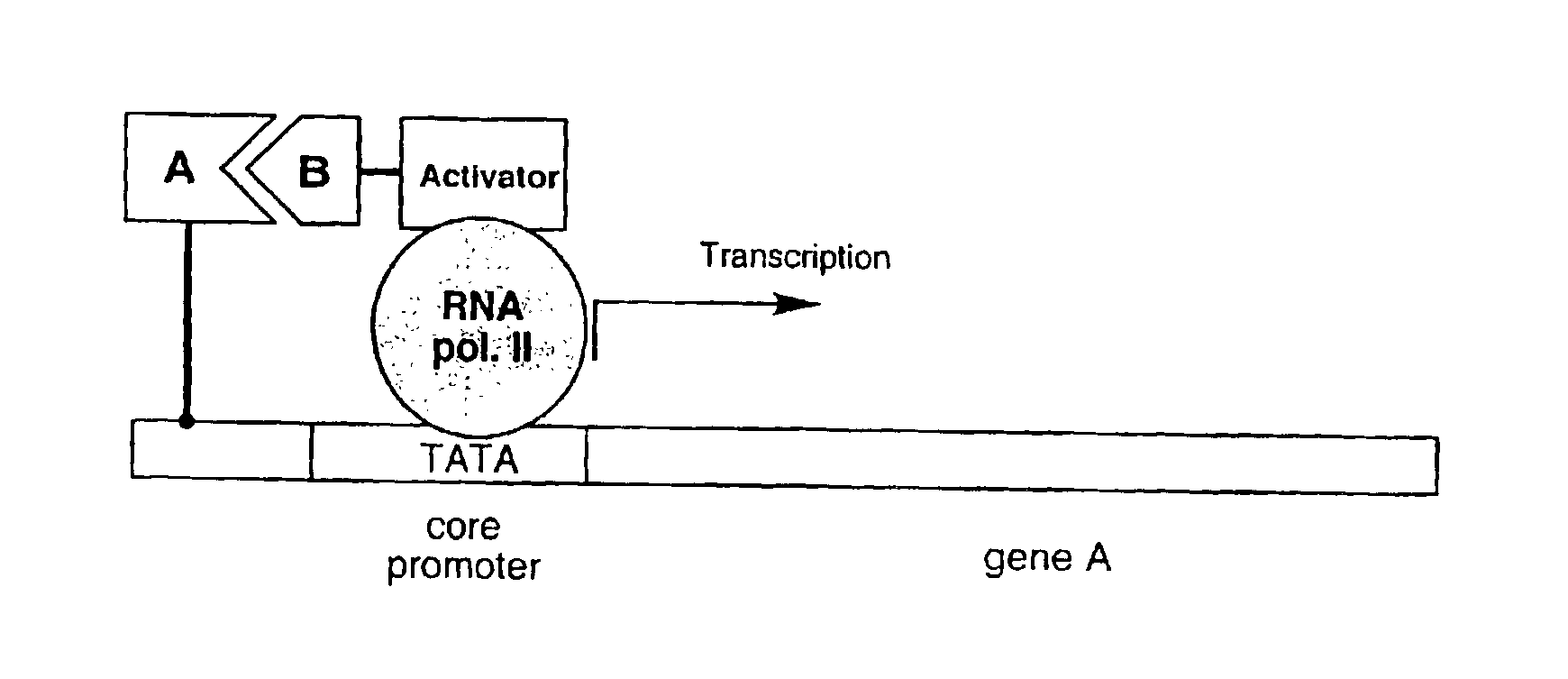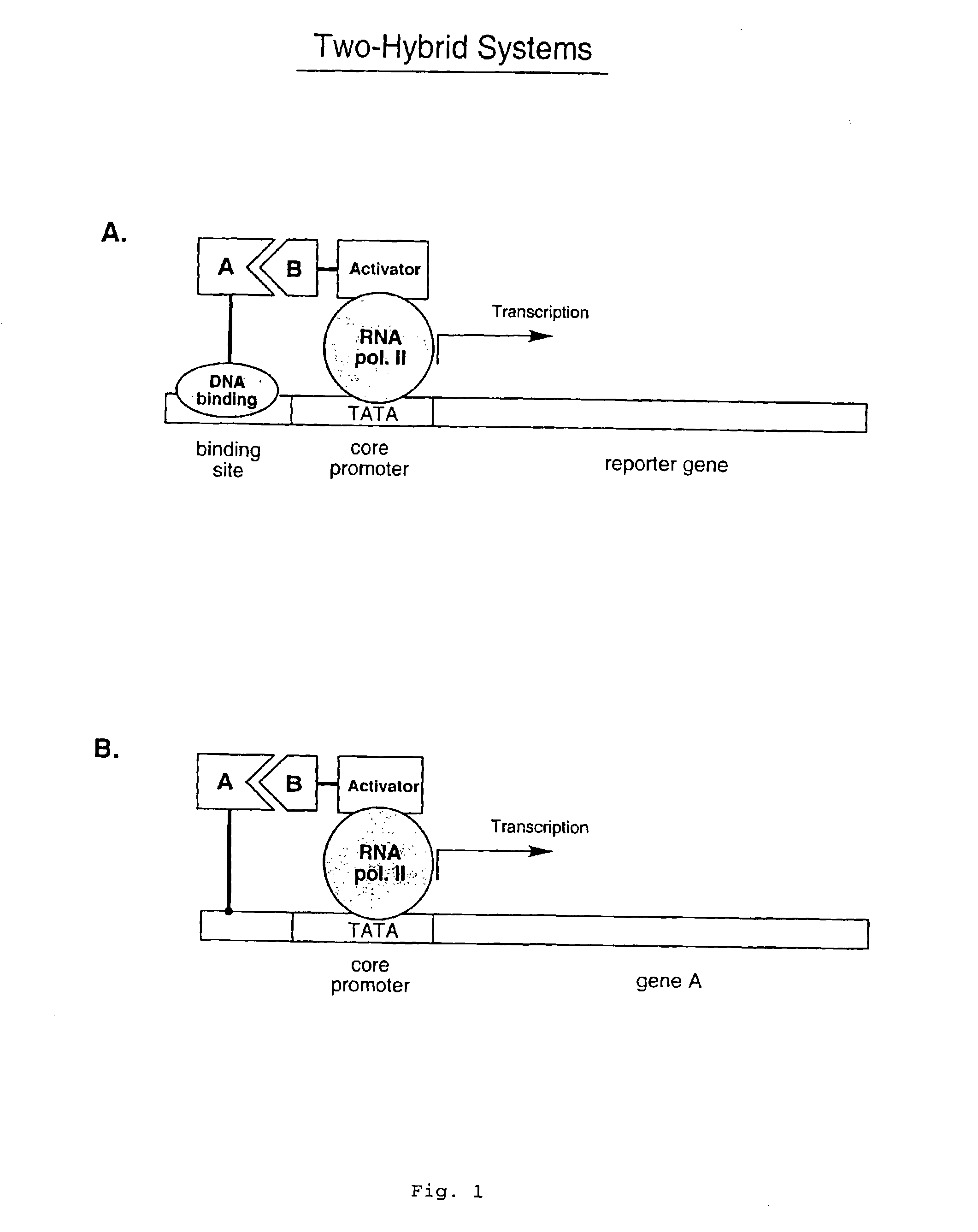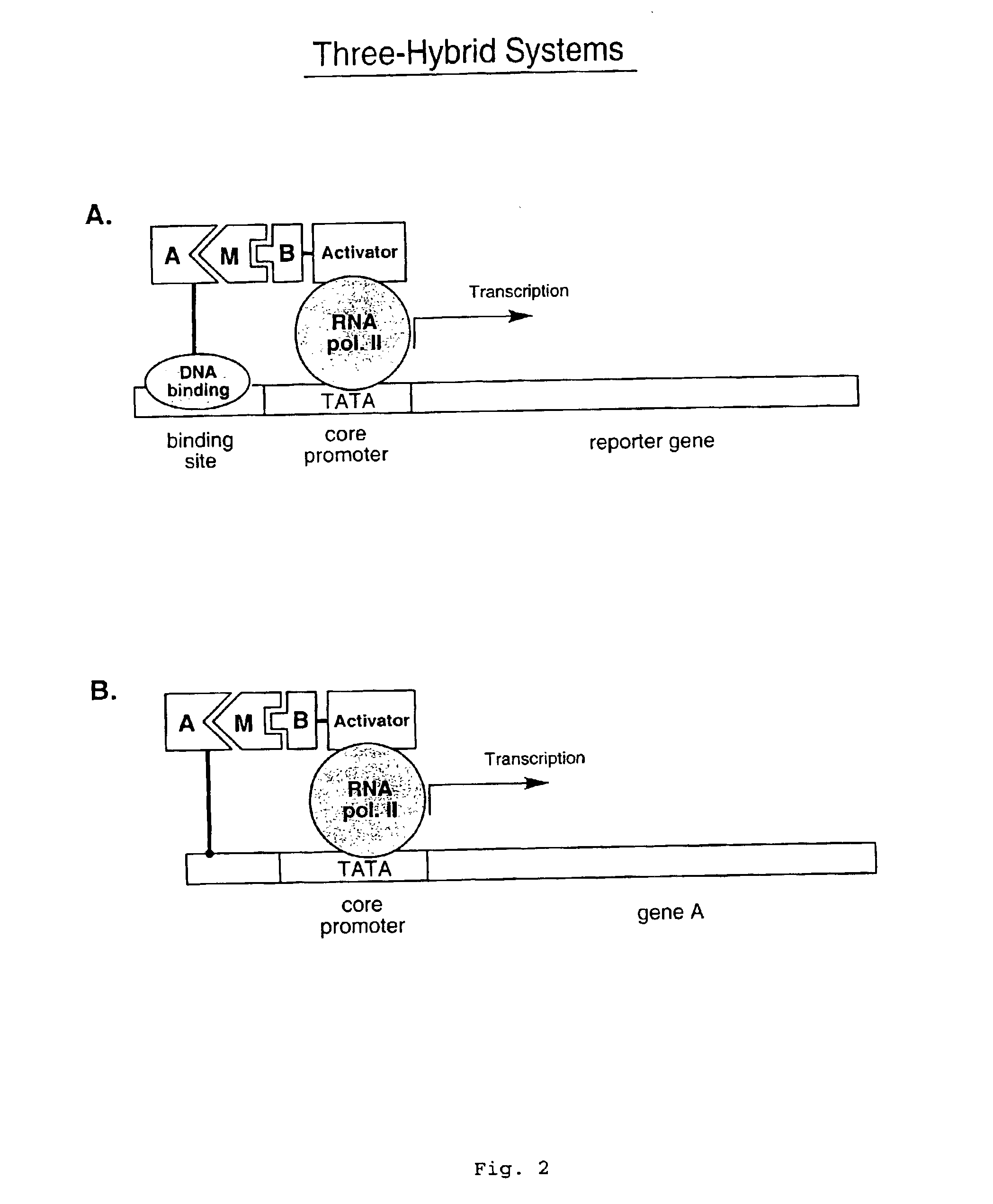In vitro protein interaction detection systems
a protein interaction and detection system technology, applied in the field of in vitro techniques, can solve the problems of difficult delivery of certain drugs to the cytoplasm of cells, restricted assays, etc., and achieve the effect of reducing transcription and inhibiting interaction
- Summary
- Abstract
- Description
- Claims
- Application Information
AI Technical Summary
Benefits of technology
Problems solved by technology
Method used
Image
Examples
Embodiment Construction
[0040]Described herein are strategies to perform two-hybrid and three-hybrid experiments entirely in vitro. These assays facilitate the identification of interactions between proteins or other molecules, the identification of transcriptional activator proteins, and the detection of compounds that inhibit protein / protein or protein / compound interactions. In addition, these assays allow for the selection of peptides and proteins with desired properties out of large libraries. To carry out these methods, individual DNA-protein fusions or libraries of such fusions are constructed (for example, as generally described in Lohse et al., WO 00 / 32823, and in Kurz et al., Chembiochem. (2001) vol. 2, pp. 101-107)). These fusion libraries can include large sets of chimeric molecules in which each protein is covalently bound to its own encoding gene sequence. Binding of a DNA-protein fusion to a suitable target molecule (that is itself covalently attached to a transcription activation domain) res...
PUM
| Property | Measurement | Unit |
|---|---|---|
| non-covalent interactions | aaaaa | aaaaa |
| nucleic acid sequences | aaaaa | aaaaa |
| nucleic acid | aaaaa | aaaaa |
Abstract
Description
Claims
Application Information
 Login to View More
Login to View More - R&D
- Intellectual Property
- Life Sciences
- Materials
- Tech Scout
- Unparalleled Data Quality
- Higher Quality Content
- 60% Fewer Hallucinations
Browse by: Latest US Patents, China's latest patents, Technical Efficacy Thesaurus, Application Domain, Technology Topic, Popular Technical Reports.
© 2025 PatSnap. All rights reserved.Legal|Privacy policy|Modern Slavery Act Transparency Statement|Sitemap|About US| Contact US: help@patsnap.com



